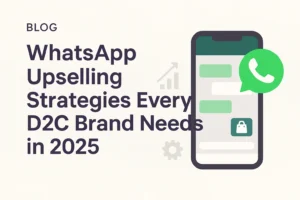In the dynamic world of mobile applications, merely developing a great app is no longer enough. To ensure long-term sustainability and profitability, a robust monetization strategy is essential. As we move further into 2025, the landscape for app monetization is becoming more sophisticated, driven by evolving user behaviors, technological advancements, and the demand for personalized experiences. For Mobile App Development Companies in the USA, understanding and implementing these strategies is key to delivering successful products for their clients.
Here are the top 11 mobile app monetization strategies in 2025:
1. In-App Advertising (IAA) with Advanced Formats
In-app advertising remains a dominant revenue stream, especially for free-to-download apps. However, 2025 sees a shift towards more sophisticated and less intrusive ad formats. The global mobile ad spending is projected to reach significant figures, indicating its continued importance.
- Rewarded Video Ads: Users voluntarily watch a video ad in exchange for in-app rewards (e.g., extra lives, virtual currency, exclusive content). This format is highly effective due to its opt-in nature, leading to higher engagement and satisfaction.
- Interstitial Ads: Full-screen ads that appear at natural transition points (e.g., between game levels, after completing a task). While more intrusive than banner ads, their full-screen nature leads to higher viewability and eCPM (effective cost per mille), especially when implemented thoughtfully.
- Native Ads: These ads blend seamlessly with the app’s content and design, making them feel less like an interruption and more like an integrated part of the user experience (e.g., sponsored posts in a social media feed).
- Playable Ads: Short, interactive ad experiences, particularly popular in gaming, where users can try a mini-version of another game or app. This format offers high engagement and conversion rates.
The key to successful IAA in 2025 is finding the right balance between revenue generation and user experience, avoiding ad fatigue through smart placement and frequency.
2. In-App Purchases (IAP)
In-App Purchases are a cornerstone of mobile app monetization, allowing users to buy digital goods or premium features directly within the app. This strategy is particularly prevalent in gaming but is increasingly adopted by productivity, lifestyle, and social apps.
- Consumables: Items that can be used up (e.g., virtual currency, extra lives, power-ups in games).
- Non-Consumables: One-time purchases that provide permanent access to features or content (e.g., unlocking pro features, removing ads, special avatars, premium filters).
- Auto-Renewable Subscriptions (see next point): Recurring access to content or features.
The growth of the IAP market is significant, driven by smartphone penetration and immersive experiences like AR. Successful IAP implementation requires clear value propositions and seamless payment flows.
3. Subscription Models
Subscription models are gaining immense popularity, especially for non-gaming apps, due to their ability to generate predictable, recurring revenue. Users pay a regular fee (monthly, annually) for continuous access to premium content, features, or an ad-free experience.
- Tiered Subscriptions: Offering different levels of access with varying benefits (e.g., basic, premium, pro tiers) to cater to diverse user needs and budgets.
- Free Trials: Providing a limited-time free trial encourages users to experience premium features before committing to a subscription, significantly boosting conversion rates.
- Exclusive Content/Features: Continually adding value and exclusive content for subscribers is crucial for reducing churn and encouraging long-term retention.
This model fosters user loyalty and provides a stable revenue stream for ongoing app development and maintenance.
4. Freemium Model
The freemium model offers a basic version of the app for free, with limited features or content, and encourages users to upgrade to a paid (premium) version for full access. It’s an excellent user acquisition strategy.
- Value Proposition: The free version must offer enough value to attract a large user base, while the premium features must be compelling enough to drive conversions.
- Clear Upgrade Path: The app should clearly communicate the benefits of upgrading and make the process simple and intuitive.
- Hybrid Monetization: Many successful freemium apps combine this model with in-app ads for free users and IAPs for specific content, maximizing revenue from both free and paid user bases.
5. Affiliate Marketing
Apps can generate revenue by promoting relevant third-party products or services within their platform. This is achieved by integrating unique affiliate links or codes.
- Contextual Integration: Promotions should be highly relevant to the app’s content and user interests to be effective and non-intrusive.
- Commission-Based: The app earns a commission for every sale or lead generated through its platform.
- Examples: A fitness app could recommend workout gear, a recipe app could link to ingredients on an e-commerce site, or a travel app could suggest hotels and flights.
6. Sponsorships & Brand Partnerships
For apps with a specific niche audience or a substantial user base, direct sponsorships and brand partnerships can be highly lucrative.
- Branded Content: Collaborating with brands to create co-branded content, challenges, or experiences within the app.
- Exclusive Features: Offering specific features or sections of the app sponsored by a brand.
- Event Sponsorships: For event-based apps, featuring sponsors prominently within the app.
This strategy requires a strong understanding of your audience and the ability to attract brands looking to reach that specific demographic.
7. Transaction Fees (Commission-Based Model)
Apps that facilitate transactions between users or between users and service providers can monetize by taking a small percentage or a flat fee from each completed transaction.
- Marketplace Apps: (e.g., e-commerce marketplaces, booking platforms, service aggregators).
- Transparent Fees: Clearly communicate all fees to users to maintain trust and avoid surprises.
- Secure Payment Infrastructure: A robust and secure payment gateway is crucial for handling transactions reliably.
8. Data Monetization (Ethical & Anonymized)
With increasing data privacy regulations, the ethical collection and anonymization of user data have become paramount. Apps can monetize aggregated and anonymized user insights by selling them to market research firms, advertisers, or other businesses.
- User Consent: Explicit and informed user consent is absolutely essential and legally required.
- Anonymization: Data must be rigorously anonymized to protect individual user identities.
- Value Proposition: The data must offer valuable insights into market trends, consumer behavior, or industry-specific patterns.
This method requires a strong commitment to data privacy and compliance with regulations like GDPR and CCPA.
9. Selling Physical Products or Services
For brands with existing physical products or services, the mobile app can serve as a direct sales channel, often enhanced by exclusive in-app offers or loyalty programs.
- E-commerce Integration: Seamlessly integrating an in-app store for direct purchases.
- Location-Based Services: Using location data to offer in-store promotions or facilitate local service bookings.
- Unique App-Only Deals: Providing exclusive discounts or early access to products only available through the app to drive engagement and sales.
10. Crowdfunding & Donations
While not a primary long-term monetization strategy for most apps, crowdfunding can be effective for initial development or for niche apps with passionate communities. Donations can also provide supplementary income, especially for utility or content-based apps that users highly value.
- Community Building: Requires a strong, engaged user base that believes in the app’s mission or value.
- Transparency: Be transparent about how funds will be used.
- Niche Appeal: Works best for apps serving a specific community or cause.
11. Hybrid Monetization Strategies
In 2025, many of the most successful apps employ a hybrid approach, combining multiple monetization strategies to diversify revenue streams and cater to different user segments.
- Freemium + Ads + IAP: A common model where free users see ads and can make one-time purchases, while premium subscribers get an ad-free experience and access to all features.
- Subscription + IAP: Users subscribe for core functionality, but can make additional one-time purchases for specific digital goods or content.
- Ads + Affiliate Marketing: An app that primarily uses ads might also integrate relevant affiliate links for additional revenue.
The Role of Mobile App Development Companies in the USA
For businesses looking to implement these strategies, partnering with experienced Mobile App Development Companies in the USA is crucial. These companies offer:
- Strategic Consultation: Helping you choose the optimal monetization model(s) based on your app’s niche, target audience, and business goals.
- Technical Expertise: Seamless integration of various monetization SDKs (for ads, payments, subscriptions) and robust backend development to support revenue streams.
- UI/UX Optimization: Designing app experiences that balance monetization with user satisfaction, preventing “ad fatigue” or intrusive paywalls.
- Analytics and Optimization: Implementing advanced analytics to track monetization performance, user behavior, and facilitate A/B testing to continuously optimize revenue.
- Compliance and Security: Ensuring that all monetization practices comply with app store guidelines, data privacy regulations, and secure payment processing standards.
By leveraging these diverse monetization strategies and the expertise of a professional Mobile App Development Company in the USA, businesses can transform their mobile apps into powerful revenue-generating assets in 2025 and beyond.





